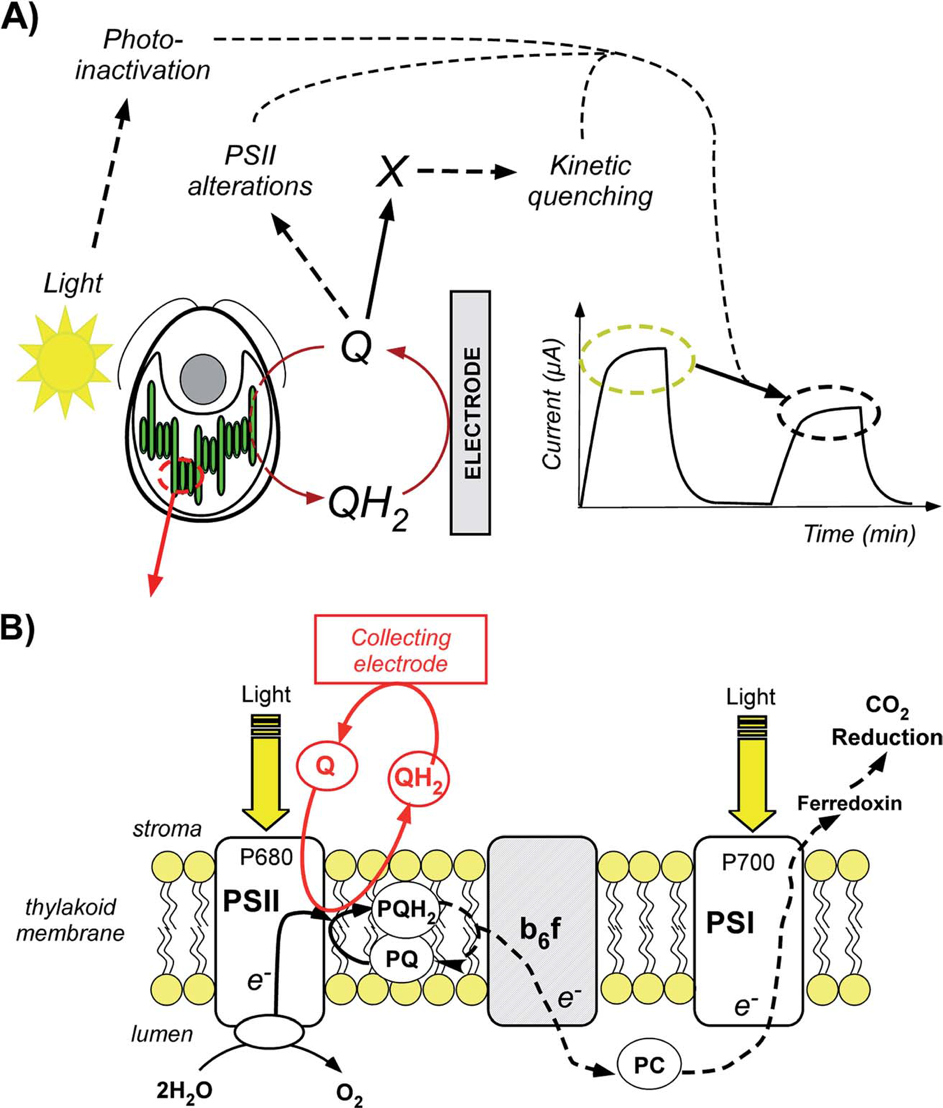
Plants, algae, and some bacteria convert solar energy into chemical energy by using photosynthesis. In light of the current energy environment, many research strategies try to benefit from photosynthesis in order to generate usable photobioelectricity. Among all the strategies developed for transferring electrons from the photosynthetic chain to an outer collecting electrode, we recently implemented a method on a preparative scale (high surface electrode) based on a Chlamydomonas reinhardtii green algae suspension in the presence of exogenous quinones as redox mediators. While giving rise to an interesting performance (10–60 μA cm−2) in the course of one hour, this device appears to cause a slow decrease of the recorded photocurrent. In this paper, we wish to analyze and understand this gradual fall in performance in order to limit this issue in future applications. We thus first show that this kind of degradation could be related to over-irradiation conditions or side-effects of quinones depending on experimental conditions. We therefore built an empirical model involving a kinetic quenching induced by incubation with quinones, which is globally consistent with the experimental data provided by fluorescence measurements achieved after dark incubation of algae in the presence of quinones.

Pour plus d’informations, consulter le communiqué de presse associé à cet article : Étudier la photoélectricité produite par des algues !
References:
Investigation of photocurrents resulting froma living unicellular algae suspension with quinones over time
Guillaume Longatte, Adnan Sayegh, Jérôme Delacotte, Fabrice Rappaport, Francis-André Wollman, Manon Guille-Collignon and Frédéric Lemaître
Chem. Sci., 2018
DOI: 10.1039/c8sc03058h
Investigation of photocurrents resulting from a living unicellular algae suspension with quinones over time
